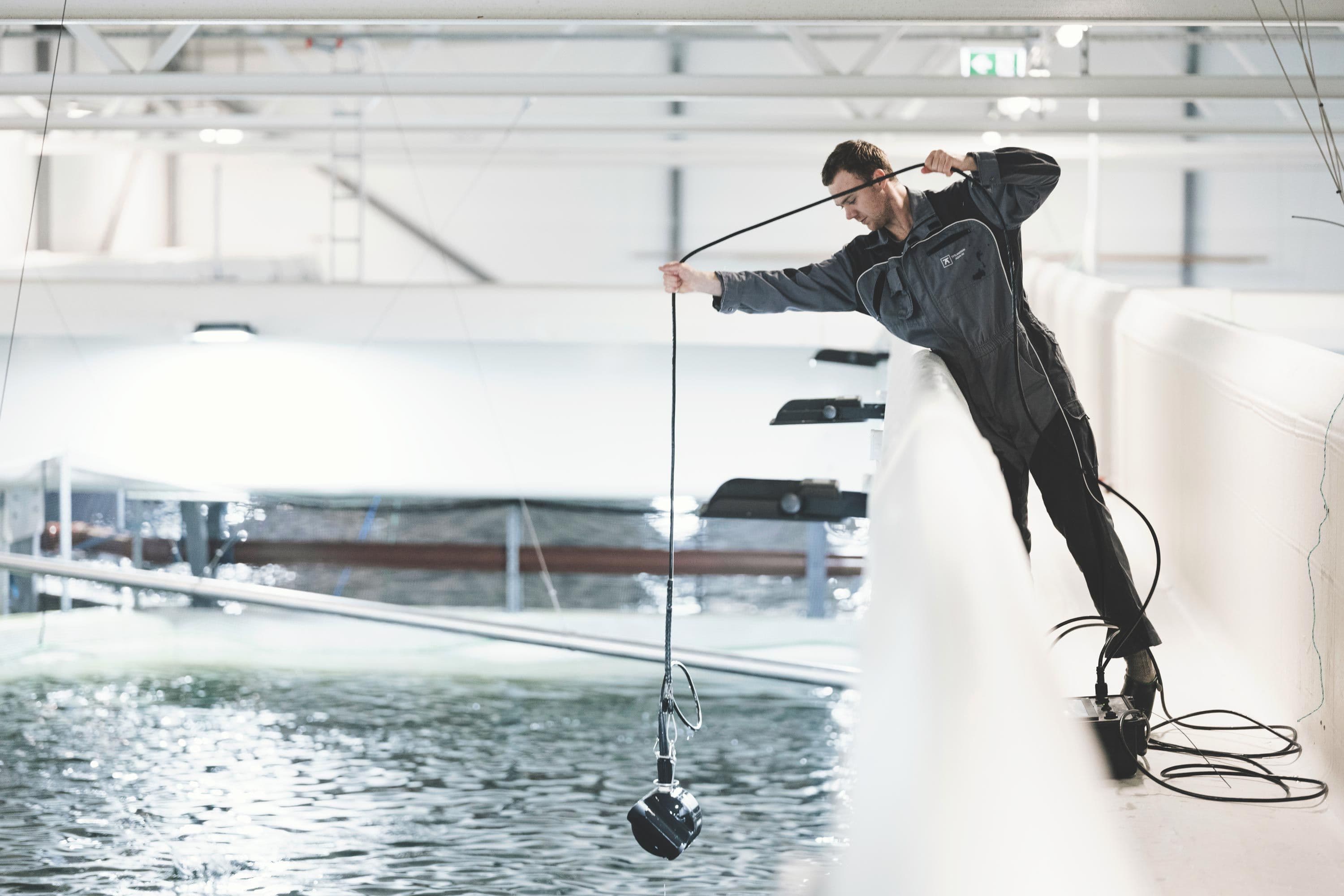
“First of all, we have proven that post-smolt works,” says Kjetil Ørnes. He is interim Regional Director at Grieg Seafood Rogaland, the region where the Grieg Seafood is piloting its post-smolt program.
During the first stages of their life, salmon are raised in onshore freshwater facilities. In traditional salmon farming, fish are transferred to the sea once they have undergone the smoltification process, making them physiologically ready for life in saltwater. However, Grieg Seafood’s post-smolt strategy means that, after smoltification, the fish are grown for a longer period on land or in closed facilities in the sea, thereby shortening the time they spend in open sea-pens by several months.
In 2014, the average weight of the salmon transferred to sea farms in Grieg Seafood Rogaland was 90 grams. In 2020, the average weight at the time of transfer was around 400 grams.
The change has happened step by step. Kjetil has been in the salmon farming industry for more than 30 years, and knows first-hand how delicate biology is. Biting off more than you can chew will always backfire.
“In recent years, we have tested transferring groups of fish of many different sizes from freshwater facilities to our sea farms. We can conclude that fish of various sizes at transfer thrive and grow well. When we launched our post-smolt program some years ago, we believed it would work, but we did not know for sure,” Kjetil explains.
Fewer sea lice treatments and less disease
Grieg Seafood strongly believes that post-smolt transfer will improve both sustainability and profitability. A shorter time at sea reduces exposure to sea lice, diseases, low oxygen, harmful plankton, and other environmental issues. The aim is to achieve a reduced environmental impact, improved fish welfare, survival, quality and biological control, and lower costs.
In other words, shorter time at sea strengthens ocean-based salmon production.
“While still early days, we see some promising indications. In our experience so far, post-smolt salmon need fewer sea lice treatments. At the Teistholmen sea farm in 2020, where we raised one group of post-smolt and one group of regular smolt, we reduced the number of sea lice treatments applied to our post-smolt fish by 50%,” says Kjetil.
Pancreas disease (PD) has been one of the biggest biological challenges in Rogaland, and has had a negative impact on survival, fish welfare, growth, quality, and costs.
“We found that PD often occurred at the end of the salmon’s production cycle, just before harvest. In 2017, we had PD at more than half of our farms, while in 2020 we had only one outbreak. Indications show that a shorter time at sea has reduced the risk of PD. Last year at Teistholmen, after we had harvested out the post-smolt group, we had an outbreak of PD in the group of regular smolt that was still at the farm and too small to be harvested,” Kjetil explains.
Adapting to a new production cycle
Big data analyses further support our post-smolt strategy. Grieg Seafood has used data analytics to better understand outbreaks of winter ulcers, ISA, and PD in its Norwegian regions. The analyses all corroborate the benefits of reducing the time that the salmon spend at sea. Avoiding the last few months in the ocean significantly reduces risks posed by these challenges.
Still, more real-life experience is needed before a conclusion can be drawn.
“While it looks promising, we need to farm more generations before we can say anything for sure. With a production cycle of 2–3 years for each salmon, it always takes time to conclude in salmon farming. Biology is very complex,” Kjetil emphasizes.
Meanwhile, Grieg Seafood Rogaland is also working to better understand and optimize fish health, robustness, and welfare in a post-smolt cycle.
“Post-smolt farming is new, and we need to learn how to adjust to this type of production. We are looking at how we can make the salmon as robust as possible before the sea phase. For instance, we have projects to assess how to optimize light, temperature, salinity, and vaccination programs for post-smolt production,” says Kjetil.
Shorter time at sea strengthens ocean-based salmon production, because it improves fish welfare and reduces our impact.
Still less time at sea
Grieg Seafood will utilize the best practice developed in Rogaland when expanding post-smolt production in Finnmark, British Columbia, and Newfoundland over the next few years.
Meanwhile, in Rogaland, Kjetil and his team will keep reducing the time fish spend at sea. Both land-based facilities and a semi-closed containment ocean system, the FishGlobe, are used to produce post-smolt in the region. Post-smolt is a cornerstone of the operation’s plans to reach 35 000 tonnes of harvest by 2025, as it allows Grieg Seafood Rogaland to better utilize its seawater licenses.
“In 2022, we aim to transfer fish weighing an average of around 600 grams to our sea farms. In 2025, we hope to increase weight further on land and transfer fish that is approximately 750 grams on average.”
The interim Regional Director is excited about the journey ahead.
“There is no doubt in my mind that post-smolt is part of the sustainable salmon farming industry of the future. It’s the best of both the land-based and the ocean-based worlds.”